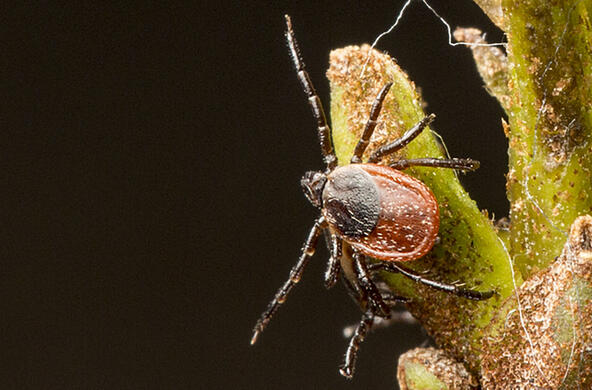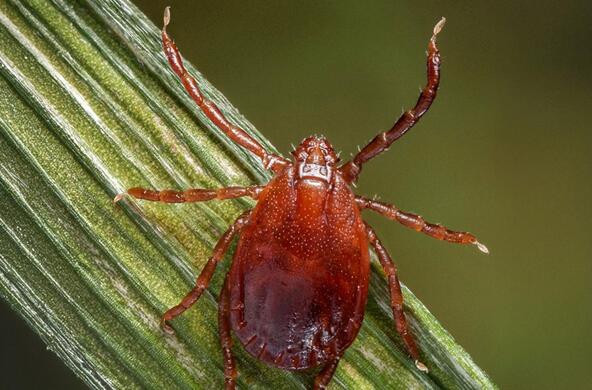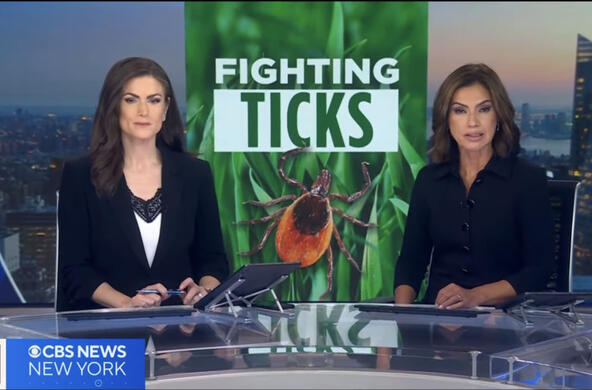(Millbrook, NY) People living in northern and central parts of the U.S. are more likely to contract Lyme disease and other tick-borne ailments when white-footed mice are abundant. Mice are effective at transferring disease-causing pathogens to feeding ticks. And, according to an in-press paper in the journal Ecology, these "super hosts" appear indifferent to larval tick infestations.
Drawing on 16 years of field research performed at the Cary Institute of Ecosystem Studies in Millbrook, New York, the paper found that white-footed mice with hundreds of larval ticks survived just as long as those with only a few ticks. Even more surprising, male mice with large tick loads were more likely to survive during a given season.
Richard Ostfeld, a disease ecologist at the Cary Institute, was among the study's authors. "Our findings were counterintuitive. By definition, ticks are parasites. But tick burdens were not correlated with reductions in white-footed mouse survival or overwintering success, and they didn't slow population growth. It looks like ticks are getting a free lunch."
Conclusions were based on an analysis of 5,587 'capture histories' recorded between 1995 and 2011. Every 3-4 weeks, from the peak of larval tick activity in midsummer until the end of the mouse breeding season in fall, mice were trapped on the Cary Institute's campus. On their first capture, animals were outfitted with ear tags. Each time a mouse was trapped researchers recorded the number of ticks on the animal, as well as other variables like its tag ID and sex.
Lead author Michelle Hersh, a past Cary Institute postdoctoral researcher, is now at Sarah Lawrence College. According to Hersh, "White-footed mice are reservoirs for the agents that cause Lyme disease, anaplasmosis, and babesiosis. Larval blacklegged ticks can become infected when they feed on mice. These ticks can then transmit illness to people during their next blood meal."
Understanding the ecology of tick-borne illness is essential to human health. Prior Cary Institute research revealed a positive relationship between white-footed mouse numbers and the abundance of blacklegged ticks infected with the bacterium that causes Lyme disease. But little was known about the impact that feeding larval ticks had on white-footed mouse survival.
To answer this question, Hersh and colleagues developed a model using the Cary Institute's long-term 'capture history' data. If blacklegged ticks had a negative effect on mice, it was expected that heavy tick burdens would lead to a decrease in mouse survival and fewer feeding opportunities for future ticks. Conversely, if mice were tolerant of ticks, heavily parasitized animals would survive as long as their parasite-free counterparts, and tick feeding opportunities would abound.
Hersh notes, "Ticks feed on blood. It seemed obvious that they should have a negative impact on mice. But our analysis found that larval ticks had few measurable effects on white-footed mouse survival, and none that were negative. This held true even in stressful years, when mouse numbers were high or acorn resources were scarce. There was also an unexpected positive association between tick burdens and within-season survival in male mice."
The authors provide several scenarios that could explain why infested male mice were likely to survive. Among them: habitat most conducive to mouse survival (i.e. dense vegetation) may also favor ticks, dominant mice with large home ranges may encounter more ticks, and mice with heavy tick burdens may exhibit more risk-averse behavior.
Co-author Shannon LaDeau, also a disease ecologist at the Cary Institute, concludes, "Our findings underscore the importance of mice as reservoirs for tick-borne pathogens. From a human health perspective, the indifference that white-footed mice have to blacklegged ticks is bad news. It signals a positive feedback loop that favors the proliferation of parasites."
The Cary Institute of Ecosystem Studies is a private, not-for-profit environmental research and education organization in Millbrook, N.Y. For thirty years, Cary Institute scientists have been investigating the complex interactions that govern the natural world. Their objective findings lead to more effective policy decisions and increased environmental literacy. Focal areas include air and water pollution, climate change, invasive species, and the ecological dimensions of infectious disease.








